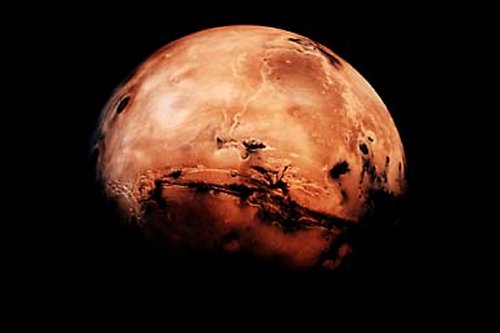A new map of an area of Mars’ ancient highlands from the Planetary Science Institute adds more evidence to support plentiful water on ancient Mars. The map shows that freely flowing liquid water, over a long period of time, was an active force in shaping the Martian terrain. That’s more good news for anyone who’s hoping we don’t have to look any farther than our neighbor to prove life exists off of our planet.
The map,published as a U.S. Geological Survey Scientific Investigations Map, was produced by Scott C. Mest and David A. Crown and shows several areas in which the surface of the red planet was likely carved by flowing water. Crown said:
This map depicts the complicated sequence of geologic processes that have served to modify ancient, rugged highland terrains surrounding the Hellas impact basin and shows evidence for the persistent effects of water and ice in degrading the Martian surface.
The detail of the new map has allowed them to see that the Martian canyons of Waikato and Reull Valles aren’t part of one canyon system as previously thought. Instead, they’re separated by an area of plains called Eridania Planitia, and water flowing out of Waikato pooled in a lake on the plains and then flowed on to help Reull Valles form separately.
But the most exciting part is that on peaks and the walls of impact craters, they found evidence of icy sediment flowing downhill, which would be the most recent water-based activity on the planet and could still be active today. On Earth, where we find water, we find life, so these highlands might be a good place to start looking for life on Mars—as long as that life doesn’t try to cut our heads off and absorb our Quickening.
(via Phys.org, image via NASA)
- The National Research Council says NASA’d better get its a** to Mars
- Comedian Lauren Reeves is still up for Mars One, which is still not happening
- New mission would test growing plants on Mars
Are you following The Mary Sue on Twitter, Facebook, Tumblr, Pinterest, & Google +?









Published: Jul 8, 2014 11:40 am